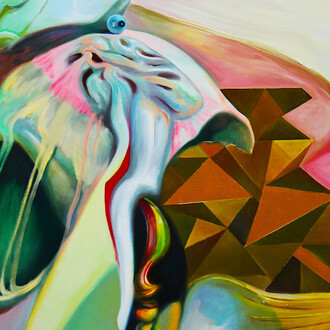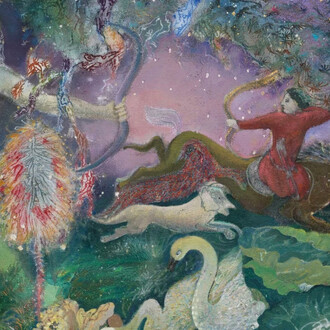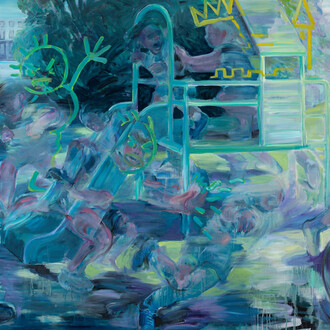Midnite porridge is the first exhibition at kurimanzutto dedicated to Ming Fay (1943–2025), the Shanghai-born, New York-based artist whose work transforms the organic world into a sculptural language of scale, imagination, and cultural resonance. Over five decades, Fay molded, sketched, and painted fruits, roots, vegetables, bones, shells, and seeds into both familiar and hybrid forms—at times faithful to their natural likeness, at others drawn from an internal, dreamlike botany. Playful yet monumental, these works evoke fantasies of growth and abundance.
The exhibition takes its title from Midnite porridge, a self-published artist’s book from 1987 that gathers Fay’s sketches, aphorisms, and reflections on the connection between art, nature, and well-being. Within its pages, plants morph into human-like figures, sometimes performing slow gestures of tai chi, while notations on breath and rhythm accompany drawings of fruits and roots. For Fay, porridge was more than nourishment; it was a metaphor for transformation —a process through which disparate elements blend, simmer, and become something sustaining. His larger-than-life sculptures enact this same alchemy, lending organic forms a quiet power that turns the everyday into objects of wonder and mythology.
Among the large-scale works he created—pears symbolizing prosperity and enduring relationships, wisdom, and justice; ginger invoking health and warmth; peppers alluding to passion and abundance; lychees recalling fleeting beauty—Fay captures the tension between the layered meanings these forms hold across cultures. His sculptures can be read as tributes to nature but also as monuments to the diasporic networks that sustain it: the fruit vendors of Chinatowns, whose displays of abundance emerge from intertwined histories of migration, labor, and adaptation. In their grandiosity, these works also reclaim and reframe familiar objects through a lens that imbues them with renewed significance and pride.
The exhibition brings together key sculptures and drawings that trace Fay’s vision of a world where diverse landscapes coexist in fragile balance. His practice underscores the persistence of organic systems within the increasingly dense architectures of the city, revealing how natural and built environments remain in constant negotiation.















